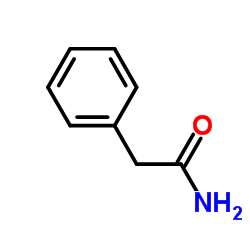CHEMICAL IDENTIFICATION
-
RTECS NUMBER :
-
XH9400000
-
CHEMICAL NAME :
-
4-Thia-1-azabicyclo(3.2.0)heptane-2-carboxylic acid, 3,3-dimethyl-7-oxo-6- (2-phenylacetamido)-
-
CAS REGISTRY NUMBER :
-
61-33-6
-
BEILSTEIN REFERENCE NO. :
-
0044740
-
LAST UPDATED :
-
199612
-
DATA ITEMS CITED :
-
24
-
MOLECULAR FORMULA :
-
C16-H18-N2-O4-S
-
MOLECULAR WEIGHT :
-
334.42
-
WISWESSER LINE NOTATION :
-
T45 ANV ESTJ CMV1R& F F GVQ
HEALTH HAZARD DATA
ACUTE TOXICITY DATA
-
TYPE OF TEST :
-
TDLo - Lowest published toxic dose
-
ROUTE OF EXPOSURE :
-
Parenteral
-
SPECIES OBSERVED :
-
Human - child
-
DOSE/DURATION :
-
15000 units/kg
-
TOXIC EFFECTS :
-
Sense Organs and Special Senses (Ear) - changes in cochlear structure or function Behavioral - convulsions or effect on seizure threshold Lungs, Thorax, or Respiration - dyspnea
-
TYPE OF TEST :
-
LD50 - Lethal dose, 50 percent kill
-
ROUTE OF EXPOSURE :
-
Oral
-
SPECIES OBSERVED :
-
Rodent - rat
-
DOSE/DURATION :
-
8 gm/kg
-
TOXIC EFFECTS :
-
Details of toxic effects not reported other than lethal dose value
-
TYPE OF TEST :
-
LD50 - Lethal dose, 50 percent kill
-
ROUTE OF EXPOSURE :
-
Unreported
-
SPECIES OBSERVED :
-
Rodent - rat
-
DOSE/DURATION :
-
9 gm/kg
-
TOXIC EFFECTS :
-
Details of toxic effects not reported other than lethal dose value
-
TYPE OF TEST :
-
LD50 - Lethal dose, 50 percent kill
-
ROUTE OF EXPOSURE :
-
Oral
-
SPECIES OBSERVED :
-
Rodent - mouse
-
DOSE/DURATION :
-
>5 gm/kg
-
TOXIC EFFECTS :
-
Details of toxic effects not reported other than lethal dose value
-
TYPE OF TEST :
-
LD50 - Lethal dose, 50 percent kill
-
ROUTE OF EXPOSURE :
-
Intraperitoneal
-
SPECIES OBSERVED :
-
Rodent - mouse
-
DOSE/DURATION :
-
3500 mg/kg
-
TOXIC EFFECTS :
-
Details of toxic effects not reported other than lethal dose value
-
TYPE OF TEST :
-
LD50 - Lethal dose, 50 percent kill
-
ROUTE OF EXPOSURE :
-
Intravenous
-
SPECIES OBSERVED :
-
Rodent - mouse
-
DOSE/DURATION :
-
329 mg/kg
-
TOXIC EFFECTS :
-
Details of toxic effects not reported other than lethal dose value
-
TYPE OF TEST :
-
LD50 - Lethal dose, 50 percent kill
-
ROUTE OF EXPOSURE :
-
Intracerebral
-
SPECIES OBSERVED :
-
Rodent - mouse
-
DOSE/DURATION :
-
5700 ug/kg
-
TOXIC EFFECTS :
-
Brain and Coverings - other degenerative changes
-
TYPE OF TEST :
-
LD50 - Lethal dose, 50 percent kill
-
ROUTE OF EXPOSURE :
-
Unreported
-
SPECIES OBSERVED :
-
Rodent - mouse
-
DOSE/DURATION :
-
7800 mg/kg
-
TOXIC EFFECTS :
-
Details of toxic effects not reported other than lethal dose value
-
TYPE OF TEST :
-
LD50 - Lethal dose, 50 percent kill
-
ROUTE OF EXPOSURE :
-
Intracerebral
-
SPECIES OBSERVED :
-
Mammal - dog
-
DOSE/DURATION :
-
1118 ug/kg
-
TOXIC EFFECTS :
-
Brain and Coverings - other degenerative changes
-
TYPE OF TEST :
-
LD50 - Lethal dose, 50 percent kill
-
ROUTE OF EXPOSURE :
-
Unreported
-
SPECIES OBSERVED :
-
Mammal - dog
-
DOSE/DURATION :
-
4940 ug/kg
-
TOXIC EFFECTS :
-
Brain and Coverings - other degenerative changes
-
TYPE OF TEST :
-
LD50 - Lethal dose, 50 percent kill
-
ROUTE OF EXPOSURE :
-
Intracerebral
-
SPECIES OBSERVED :
-
Rodent - rabbit
-
DOSE/DURATION :
-
653 ug/kg
-
TOXIC EFFECTS :
-
Brain and Coverings - other degenerative changes
-
TYPE OF TEST :
-
LD50 - Lethal dose, 50 percent kill
-
ROUTE OF EXPOSURE :
-
Unreported
-
SPECIES OBSERVED :
-
Rodent - guinea pig
-
DOSE/DURATION :
-
38 mg/kg
-
TOXIC EFFECTS :
-
Details of toxic effects not reported other than lethal dose value
-
TYPE OF TEST :
-
LD50 - Lethal dose, 50 percent kill
-
ROUTE OF EXPOSURE :
-
Oral
-
SPECIES OBSERVED :
-
Rodent - hamster
-
DOSE/DURATION :
-
24 mg/kg
-
TOXIC EFFECTS :
-
Behavioral - somnolence (general depressed activity) Behavioral - food intake (animal) Gastrointestinal - hypermotility, diarrhea
-
TYPE OF TEST :
-
LD50 - Lethal dose, 50 percent kill
-
ROUTE OF EXPOSURE :
-
Subcutaneous
-
SPECIES OBSERVED :
-
Rodent - hamster
-
DOSE/DURATION :
-
96 mg/kg
-
TOXIC EFFECTS :
-
Behavioral - somnolence (general depressed activity) Behavioral - food intake (animal) Gastrointestinal - hypermotility, diarrhea
-
TYPE OF TEST :
-
TDLo - Lowest published toxic dose
-
ROUTE OF EXPOSURE :
-
Intraperitoneal
-
SPECIES OBSERVED :
-
Rodent - mouse
-
DOSE/DURATION :
-
104 ku/kg/4D-I
-
TOXIC EFFECTS :
-
Blood - changes in other cell count (unspecified) Biochemical - Enzyme inhibition, induction, or change in blood or tissue levels - dehydrogenases
-
TYPE OF TEST :
-
TDLo - Lowest published toxic dose
-
ROUTE OF EXPOSURE :
-
Intramuscular
-
SPECIES OBSERVED :
-
Rodent - mouse
-
DOSE/DURATION :
-
750 units/kg/5D-I
-
TOXIC EFFECTS :
-
Blood - changes in serum composition (e.g. TP, bilirubin, cholesterol) Immunological Including Allergic - decrease in humoral immune response Biochemical - Enzyme inhibition, induction, or change in blood or tissue levels - phosphatases
-
TYPE OF TEST :
-
TDLo - Lowest published toxic dose
-
ROUTE OF EXPOSURE :
-
Subcutaneous
-
SPECIES OBSERVED :
-
Rodent - rat
-
DOSE/DURATION :
-
2600 mg/kg/65W-I
-
TOXIC EFFECTS :
-
Tumorigenic - equivocal tumorigenic agent by RTECS criteria Tumorigenic - tumors at site of application
MUTATION DATA
-
TYPE OF TEST :
-
Mutation test systems - not otherwise specified
-
TEST SYSTEM :
-
Microorganism - not otherwise specified
-
DOSE/DURATION :
-
20 ug/L
-
REFERENCE :
-
AMACCQ Antimicrobial Agents and Chemotherapy. (American Soc. for Microbiology, 1913 I St., NW, Washington, DC 20006) V.1- 1972- Volume(issue)/page/year: 17,572,1980 *** OCCUPATIONAL EXPOSURE LIMITS *** OEL-RUSSIA:STEL 0.1 mg/m3 JAN 1993 *** NIOSH STANDARDS DEVELOPMENT AND SURVEILLANCE DATA *** NIOSH OCCUPATIONAL EXPOSURE SURVEY DATA : NOES - National Occupational Exposure Survey (1983) NOES Hazard Code - X3134 No. of Facilities: 151 (estimated) No. of Industries: 1 No. of Occupations: 5 No. of Employees: 2695 (estimated) No. of Female Employees: 1750 (estimated)
|

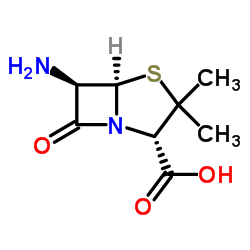

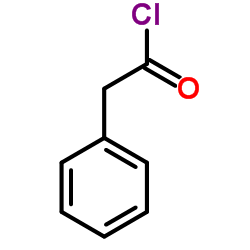

![benzyl (2S,5R,6R)-6-amino-3,3-dimethyl-7-oxo-4-thia-1-azabicyclo[3.2.0]heptane-2-carboxylate structure](https://image.chemsrc.com/caspic/207/3956-31-8.png)
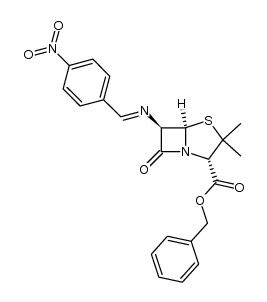


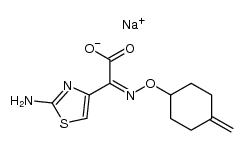
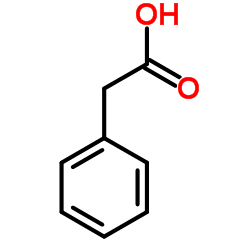

![2-Thiazolidineaceticacid, 4-carboxy-5,5-dimethyl-a-[(2-phenylacetyl)amino]- structure](https://image.chemsrc.com/caspic/341/13057-98-2.png)
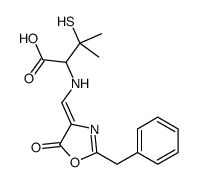
![5-benzyl-2,2-dimethyl-2,3,7,7a-tetrahydroimidazo[5,1-b][1,3]thiazole-3,7-dicarboxylic acid structure](https://image.chemsrc.com/caspic/414/13093-87-3.png)

